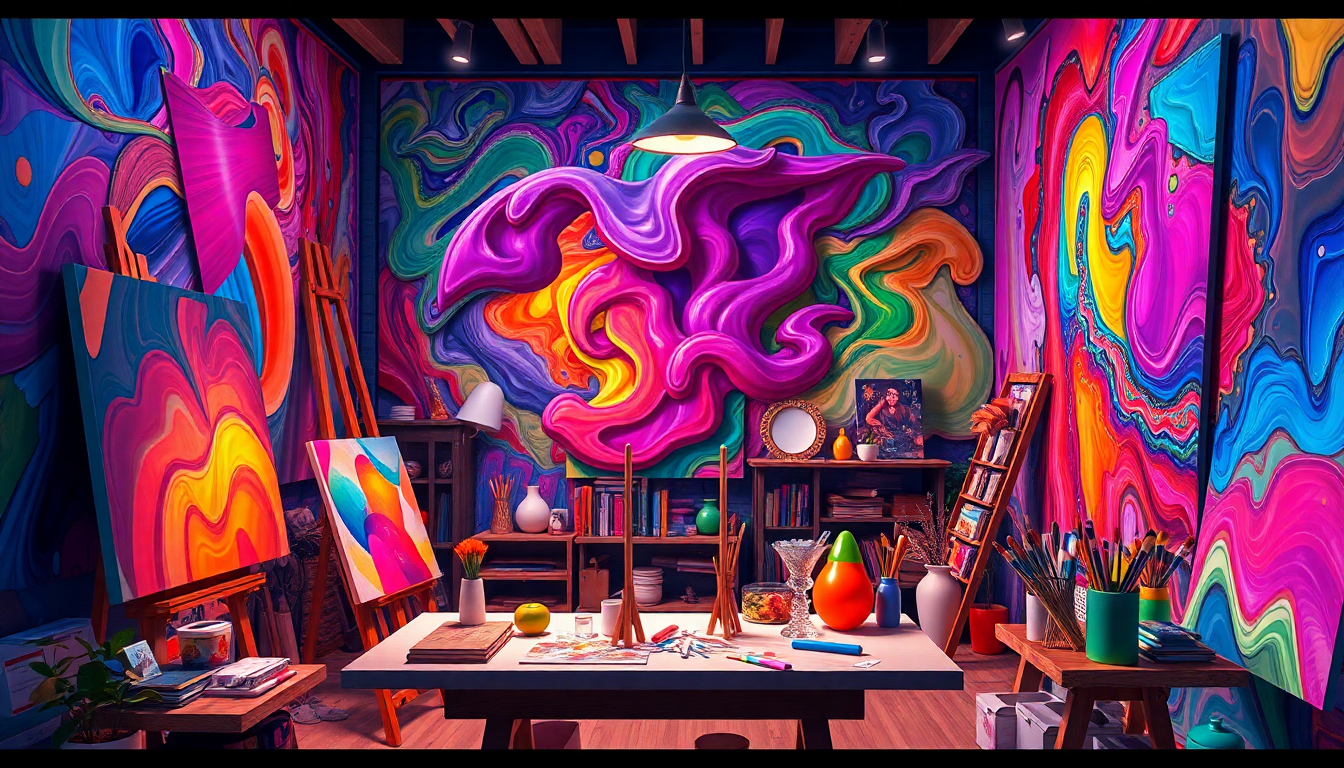Unlocking Creativity: How Creative Object Models Empower Artists
In the ever-evolving landscape of digital art, a revolutionary concept is reshaping how artists create, collaborate, and profit from their work. Creative Object Models (COMs) are emerging as powerful tools that not only amplify an artist's capabilities but also foster a thriving ecosystem of innovation and fair compensation. This article explores how COMs are transforming the artistic landscape, offering a glimpse into a future where creativity knows no bounds.
The Dawn of Creative Object Models
Creative Object Models represent a paradigm shift in the world of digital art creation. These AI-powered tools encapsulate the essence of an artist's style, techniques, and creative approach. Unlike traditional AI models, COMs are specifically designed to preserve the unique fingerprint of individual artists while enabling others to learn from and build upon their work.
For artists like Maya, an aspiring NFT creator, COMs open up a world of possibilities. By leveraging the Creative Object Models of established artists like Kai, Maya can explore new artistic horizons, blending influences and techniques to create something truly unique. This collaborative approach not only accelerates learning but also fosters a sense of community among artists of all levels.
Empowering Artists Through Technology
COMs serve as more than just tools; they're creative co-pilots that enhance an artist's natural abilities. Here's how they're making a difference:
- Skill Enhancement: Artists can use COMs to experiment with styles and techniques beyond their current skill level, accelerating their learning curve.
- Creative Fusion: By combining multiple COMs, artists can create groundbreaking works that blend diverse influences seamlessly.
- Efficient Workflow: COMs streamline the creative process, allowing artists to focus more on ideation and less on technical execution.
- Global Collaboration: Artists from around the world can collaborate asynchronously, sharing their COMs to create truly global art pieces.
For Maya, using Kai's COM feels like "unlocking a superpower," enabling her to create outputs that echo Kai's style while infusing her own creative vision. This symbiosis of human creativity and AI assistance is paving the way for a new era of artistic expression.
Ensuring Fair Compensation and Credit
One of the most significant advantages of the COM ecosystem is its built-in mechanism for fair compensation and credit. Unlike traditional AI models that may use an artist's work without proper attribution or compensation, COMs are designed with transparency and fairness in mind:
- Royalty System: When artists like Maya use Kai's COM to create new works, Kai automatically receives a share of the profits and royalties.
- Credit Attribution: The COM system ensures that original creators are always credited for their influence on new works.
- IP Protection: Artists maintain control over their intellectual property, deciding how and where their COMs can be used.
This system creates a win-win scenario where emerging artists can access powerful creative tools while established artists can monetize their style and influence without fear of exploitation.
Case Study: Maya's Creative Journey
Maya's experience with COMs illustrates the transformative power of this technology. Starting as an aspiring NFT artist inspired by Kai's 3D creations, Maya initially felt limited by her own tools and skills. However, by leveraging Kai's COM, she was able to:
- Create stunning 3D models that echoed Kai's style while incorporating her unique vision.
- Generate new NFT collections that garnered attention from collectors and brands.
- Collaborate with other artists by combining multiple COMs to create innovative, multi-influenced pieces.
- Build her own brand and artistic identity while ensuring fair compensation for the artists who inspired her.
Maya's journey from admirer to collaborator to established artist in her own right demonstrates the potential of COMs to nurture talent and foster a supportive artistic community.
The Future of Creative Collaboration
As the COM ecosystem continues to evolve, we can expect to see:
- Cross-disciplinary Innovation: Artists from different fields (e.g., visual arts, music, literature) collaborating through COMs to create multi-dimensional works.
- AI-Enhanced Art Education: COMs becoming integral to art education, allowing students to learn from master artists more directly than ever before.
- Democratized Art Market: Increased accessibility to high-level creative tools, leveling the playing field for artists regardless of their background or resources.
- Sustainable Artist Careers: A more stable and profitable career path for artists, with ongoing royalties from their COMs providing long-term income.
Conclusion
Creative Object Models are more than just another technological advancement; they represent a fundamental shift in how we approach creativity, collaboration, and artistic value. By providing tools that empower artists, ensure fair compensation, and foster a global creative ecosystem, COMs are paving the way for a future where art knows no boundaries. As artists like Maya and Kai demonstrate, the potential for innovation and collaboration is limitless. In this new landscape, every artist has the opportunity to leave their mark on the world, inspire others, and be fairly rewarded for their contributions to the ever-expanding tapestry of human creativity.
